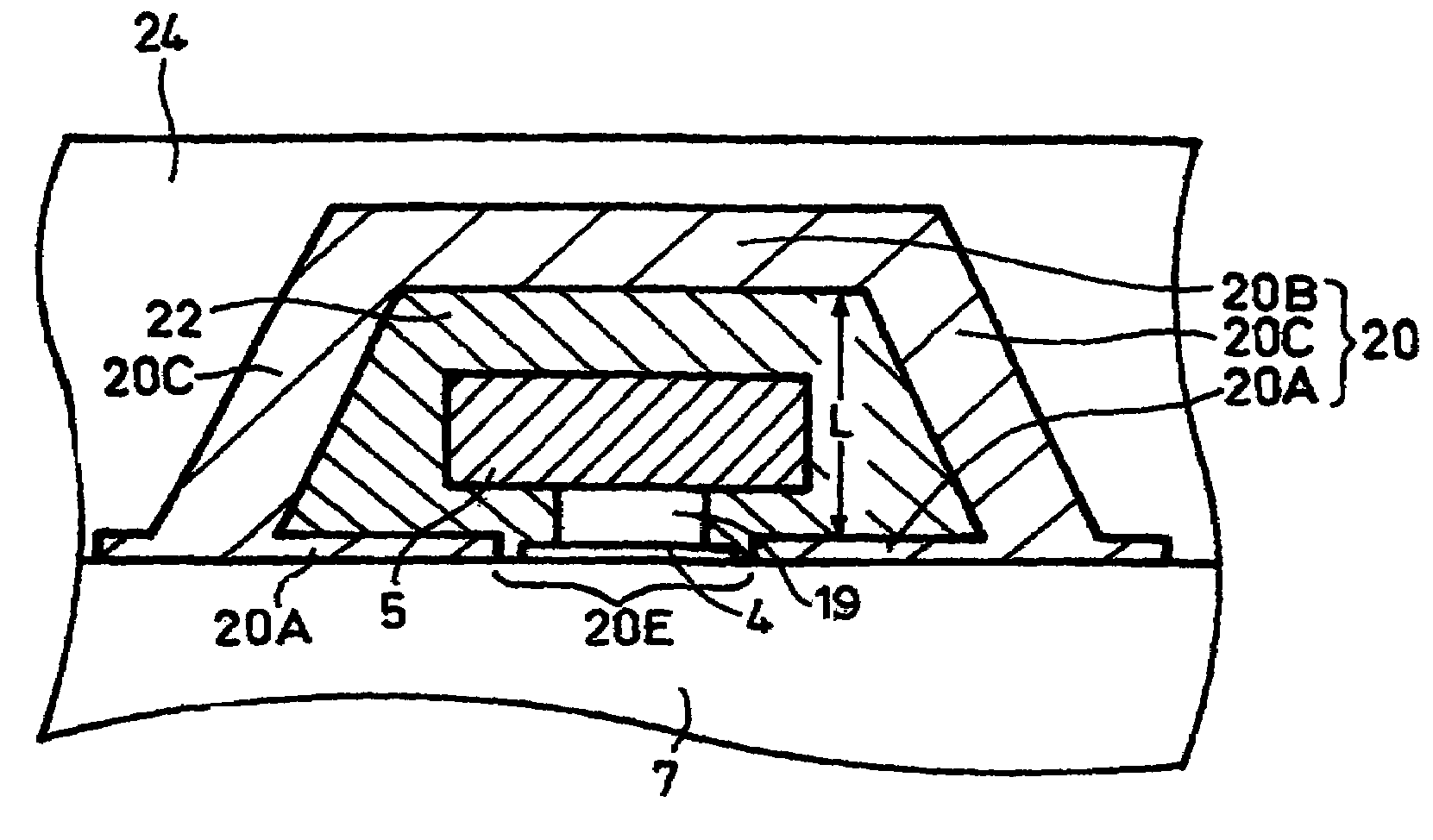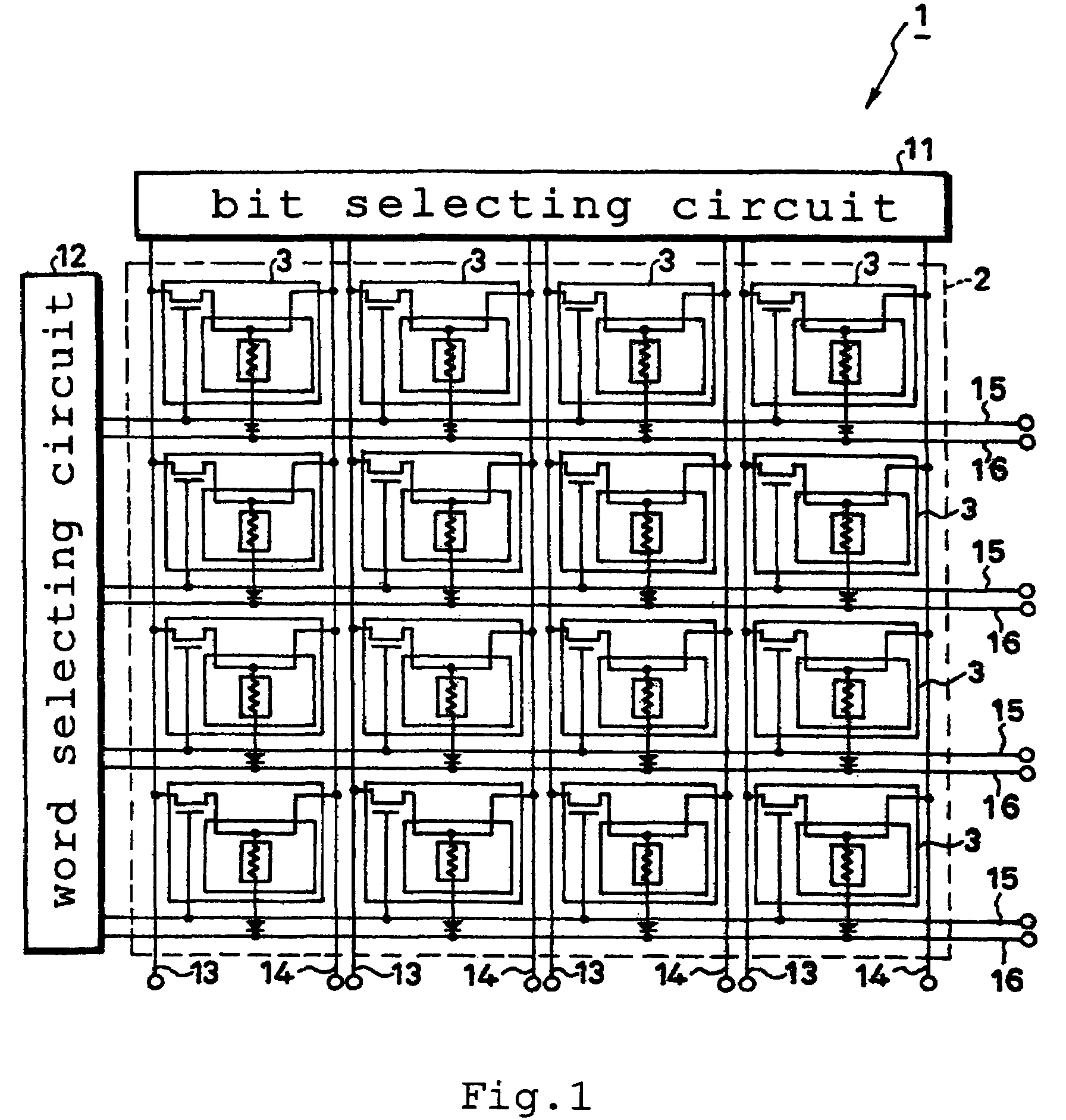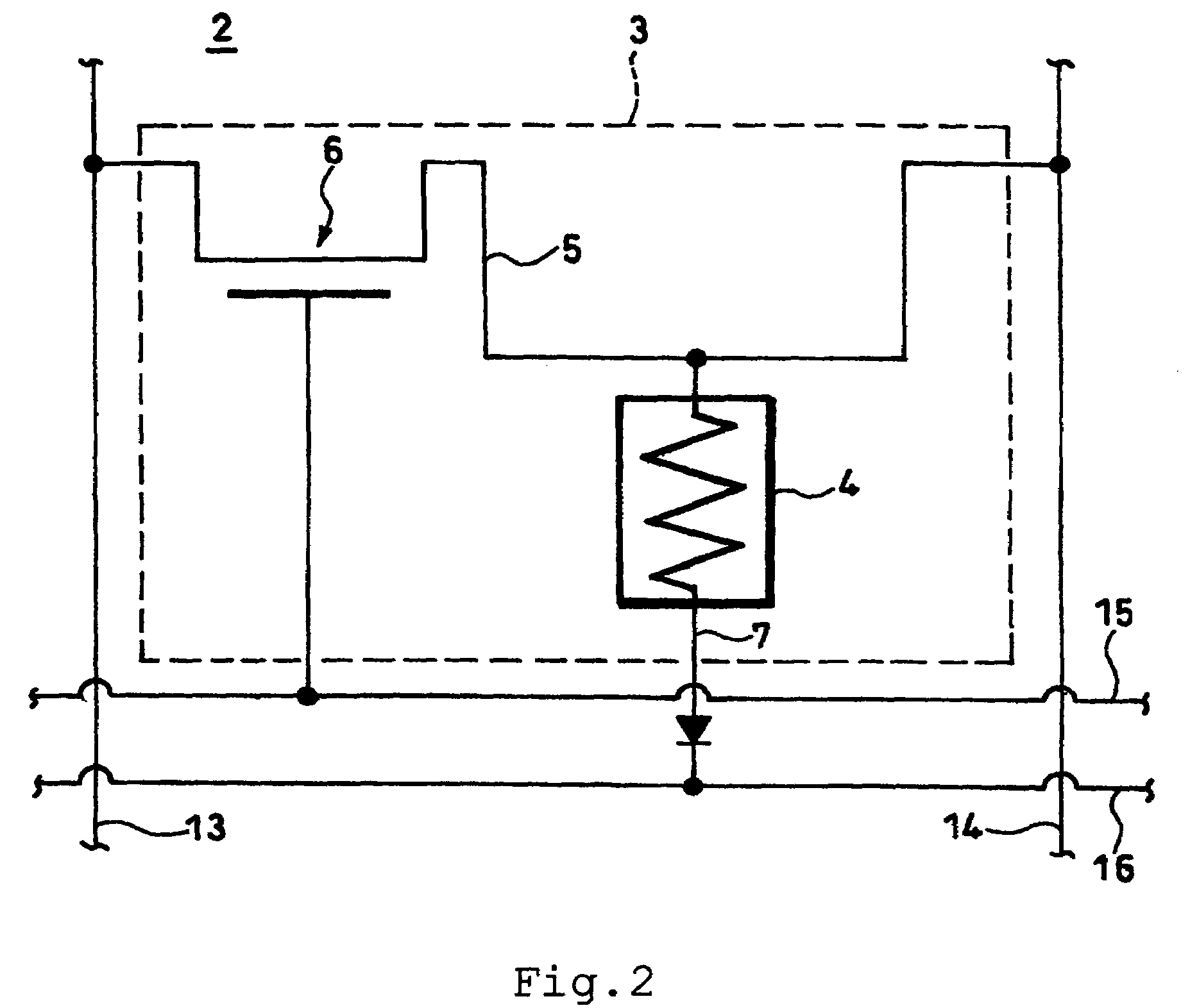Magnetic memory
a magnetic memory and memory technology, applied in the field of magnetic memory, can solve the problems of increasing the consumption of electric current, weakening the generated magnetic field, and no longer enabling the magneto-resistivity effect element to produce the magnetic field needed for magnetic memory, so as to reduce power consumption, enhance writing properties, and stabilize magnetic fields.
- Summary
- Abstract
- Description
- Claims
- Application Information
AI Technical Summary
Benefits of technology
Problems solved by technology
Method used
Image
Examples
Embodiment Construction
[0047]Now, the mode of embodiment of the magnetic memory according to this invention will be described in detail below with reference to the accompanying drawings. In the description of the drawings, like components will be denoted by like symbols and repeated explanations will be omitted.
[0048]FIG. 1 is a conceptual diagram illustrating the whole structure of a magnetic memory 1 according to the first embodiment of this invention. A magnetic memory 1 is provided with a memory part 2, a bit selecting circuit 11, a word selecting circuit 12, bit lines 13 and 14, and word lines 15, 16. In the memory part 2, a plurality of memory cells 3 are two-dimensionally arrayed in m lines and n rows (m and n each denoting an integer of not less than 2). As illustrated in an enlarged scale in FIG. 2, the memory regions 3 are individually furnished with a TMR element 4, a combination reading-writing wire 5, a combination reading-writing transistor 6, a reading wire 7, a ferromagnetic yoke structure...
PUM
 Login to view more
Login to view more Abstract
Description
Claims
Application Information
 Login to view more
Login to view more - R&D Engineer
- R&D Manager
- IP Professional
- Industry Leading Data Capabilities
- Powerful AI technology
- Patent DNA Extraction
Browse by: Latest US Patents, China's latest patents, Technical Efficacy Thesaurus, Application Domain, Technology Topic.
© 2024 PatSnap. All rights reserved.Legal|Privacy policy|Modern Slavery Act Transparency Statement|Sitemap



